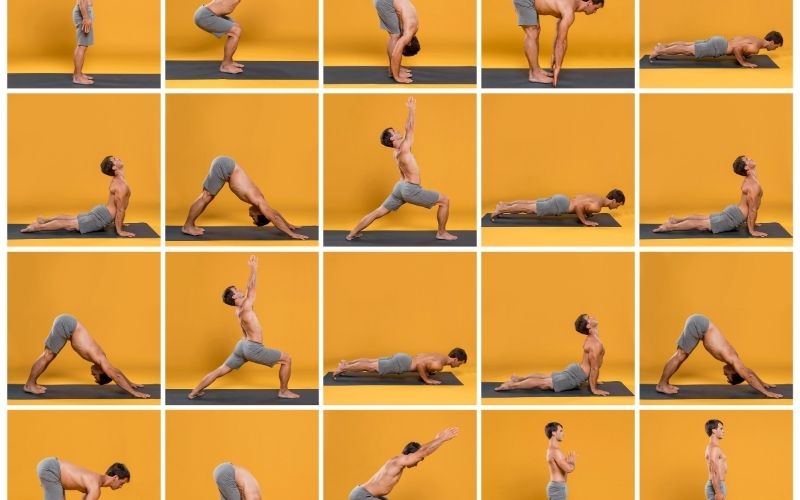Yoga is an incredible practice that benefits both the body and the mind. It helps improve flexibility, balance, strength, and mental clarity. For beginners, the journey to becoming more flexible can seem daunting, but incorporating the right beginner yoga poses for flexibility into your routine can make the process enjoyable and rewarding.
Flexibility is essential for overall health, and yoga is a fantastic way to enhance it over time. Whether you’re looking to increase your range of motion, reduce muscle stiffness, or simply improve your posture, these beginner-friendly yoga poses will help you get started.
Key Points:
- Yoga helps improve flexibility, which can ease muscle stiffness and improve overall health.
- Consistent practice of beginner yoga poses will gradually increase your flexibility over time.
- Using proper breathing techniques is key to achieving the most benefit from yoga poses.
Why Is Flexibility Important in Yoga?
Before diving into beginner yoga poses for flexibility, it’s essential to understand why flexibility matters in yoga. Flexibility goes beyond simply being able to touch your toes. It’s about giving your muscles and joints more mobility, which can prevent injury, relieve tension, and improve overall posture.
1. The Role of Flexibility in Injury Prevention
One of the main benefits of improving flexibility through yoga is the reduction of the risk of injury. When your muscles are more flexible, they can handle more strain without tearing or becoming overexerted. Additionally, flexibility improves joint health by promoting better circulation and reducing stiffness.
For example, poses like the Downward Dog stretch the hamstrings and calves, increasing flexibility in those areas and preventing potential injury.
Reminder: Take it slow. Flexibility doesn’t come overnight, and pushing your body too hard can lead to strain or injury.
2. How Flexibility Affects Overall Mobility
Flexibility doesn’t just benefit one muscle group. It helps improve the mobility of your entire body. This is important because flexibility can improve your posture, alleviate back pain, and even reduce stress levels. Over time, your body will begin to move more freely, improving both your everyday activities and your performance in yoga.
- Example: The Cat-Cow stretch increases spinal flexibility, which can help reduce stiffness in the back and improve your posture.
What Are the Best Beginner Yoga Poses for Flexibility?
Now that you understand the importance of flexibility, it’s time to explore the best beginner yoga poses for flexibility. These poses are simple to perform and can gradually help increase your range of motion. Let’s take a look at some effective poses.
1. Downward Dog (Adho Mukha Svanasana)
The Downward Dog is a foundational yoga pose that stretches the back, hamstrings, and calves. It’s also excellent for lengthening your spine and improving posture. To perform this pose, start on all fours, lift your hips towards the ceiling, and straighten your legs while keeping your hands pressed firmly into the floor.
- Example: Hold this pose for 20-30 seconds, focusing on keeping your spine straight and your legs extended.
Reminder: Keep your shoulders away from your ears to avoid straining your neck.
2. Cat-Cow Pose (Marjaryasana-Bitilasana)
This dynamic pose sequence targets the spine and encourages flexibility in your back and neck. Start in a tabletop position, then alternate between arching and rounding your back as you move from Cat to Cow pose. This gentle movement helps to stretch the spine and relieve tension.
- Example: Inhale as you move into Cow pose, lifting your chest and tailbone. Exhale as you move into Cat pose, rounding your spine and tucking your chin.
3. Child’s Pose (Balasana)
Child’s pose is a restorative yoga pose that stretches the back, hips, and thighs. This pose is excellent for beginners, as it provides a deep stretch while allowing the body to relax. To do Child’s Pose, kneel on the floor, lower your hips toward your heels, and stretch your arms forward on the mat.
- Example: Focus on relaxing your body and breathing deeply to release any tension in your muscles.
4. Seated Forward Fold (Paschimottanasana)
The Seated Forward Fold is a great pose for stretching the hamstrings, lower back, and calves. Sit on the floor with your legs extended straight in front of you, then hinge at your hips to fold forward, reaching toward your feet.
- Example: Try to keep your back straight and avoid rounding your spine to get the most benefit from the stretch.
How to Safely Improve Flexibility with Yoga?
It’s important to approach flexibility training with care to avoid injury. Yoga offers a safe and effective way to improve flexibility, but it’s essential to listen to your body and avoid over-stretching.
1. Start with Gentle Poses
If you’re new to yoga, begin with simple poses that target major muscle groups. Incorporating gentle stretches like Child’s Pose and Seated Forward Fold into your practice will allow your muscles to gradually lengthen.
- Example: Start each session with a few minutes of gentle stretching to warm up your muscles.
2. Use Breathing Techniques to Deepen Your Stretch
Breathing deeply during each pose allows your muscles to relax, making it easier to stretch deeper. Use deep, controlled breaths to calm your mind and deepen your stretches.
- Example: In poses like Downward Dog, try to breathe deeply through your nose, and with each exhale, see if you can stretch a little deeper.
Note: Don’t force yourself into a stretch. Flexibility takes time, so be patient with your progress.
3. Hold Each Pose for 20-30 Seconds
To gain the most flexibility benefits, hold each pose for at least 20-30 seconds. This allows your muscles time to relax and stretch properly. If you’re new to yoga, start with shorter holds and gradually increase the time as you feel more comfortable.
How Often Should You Practice Yoga for Flexibility?
The key to improving flexibility is consistency. Regular practice helps you see progress over time. But how often should you practice yoga to improve your flexibility?
1. Aim for at Least Three Times a Week
To see noticeable improvements in flexibility, try to practice yoga at least three times a week. Consistency is more important than intensity when it comes to yoga, so don’t feel pressured to practice daily if that’s not feasible.
- Example: Even a short 20-minute session three times a week can lead to steady improvements in flexibility.
2. Listen to Your Body’s Needs
It’s essential to listen to your body during yoga practice. If you’re feeling fatigued or experiencing discomfort, take a break or reduce the intensity of your practice. Flexibility improves gradually, and pushing yourself too hard can lead to injury.
Conclusion
Incorporating beginner yoga poses for flexibility into your routine is a wonderful way to improve your overall health. Yoga helps you increase your range of motion, reduce tension, and promote relaxation. By focusing on poses that target the spine, hamstrings, and back, you can gradually build flexibility over time.
Start with simple poses like Downward Dog and Child’s Pose, and as you grow more comfortable, incorporate more challenging stretches. Consistency is the key to success—practice regularly, listen to your body, and you’ll see improvement in your flexibility.
FAQ’s
- What are some beginner yoga poses for flexibility?
Some great poses for beginners include Downward Dog, Cat-Cow, Child’s Pose, and Seated Forward Fold. These stretches target various areas of the body to improve flexibility. - How can I increase my flexibility with yoga?
To improve flexibility, practice yoga regularly, hold each stretch for 20-30 seconds, and incorporate deep breathing techniques into your practice. - Can I practice yoga every day to improve flexibility?
While daily practice can be beneficial, aim to practice at least three times a week to avoid over-stretching. Be mindful of your body’s needs and adjust the frequency if needed. - What is the best yoga pose for improving back flexibility?
The Cat-Cow pose is excellent for improving flexibility in the back. It helps loosen up the spine and increase mobility in the upper and lower back. - How do I avoid injury when practicing yoga for flexibility?
Always listen to your body, start with gentle poses, and avoid pushing yourself too hard. Use proper form and breathing to deepen stretches safely.

